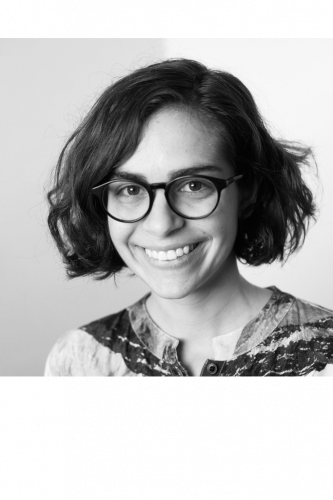Bridging Biology and Art
Being different has always been the norm for Christina Agapakis (YC ’06). After receiving her PhD in biological and biomedical sciences from Harvard University in 2011, she became the creative director in 2015 for Ginkgo Bioworks, an organism design company looking to apply biological methods to engineering challenges. As a member of the 2012 Forbes 30 Under 30 list, Agapakis managed to combine her passions in art and biology to bring biotechnology to the greater public.
Growing up, Agapakis has always loved art. “I was interested in art in high school and really enjoyed art classes and art making, especially drawing and making jewelry. I love the feeling of being able to translate something from inside my head into something real,” Agapakis said. However, she originally thought that she could not meld her interests in art and science together. “I used to think that liking art and science were sort of incompatible and totally separate. It was not until later in my life that I realized the power of the combination,” Agapakis said.
At home, her parents, who both studied in STEM fields, have constantly supported her love of science, encouraging her to join programs like Science Olympiad and Odyssey of the Mind. In fact, Science Olympiad cemented her interest in biology. “I remember an event called ‘Science of Fitness’ where I learned about the Krebs cycle, and the biochemistry of it just blew my mind,” she said.
However, an artist at heart, Agapakis craved a way to combine art and biology, but she did not believe that art could contribute to her education and career as a scientist until her senior year at Yale, when she took Intro to Architecture and Sculptures as Object. “These two courses really helped me rewire my brain and allowed me to approach problems differently,” Agapakis explained.
While pursuing her PhD, she met Pam Silver, an RNA expert pioneering the field of synthetic biology, who became Agapakis’s mentor. During this time, Agapakis finally realized how art could be part of her scientific practice: artists ask questions, solve problems, and find different ways to see the world–missions also essential to scientists. “Art [has] helped me be a better scientist and totally shifted my perspective on what a scientist should be,” she said.
Many of the questions she hoped to answer in synthetic biology required her to think beyond her laboratory work–towards more general scientific principles. Agapakis began blogging at Harvard, exploring the impact and implications of biotechnology. Her pieces range from discussing the social and political “ecologies” of producing cheese to the irony of design evolution. “I believe that the intersection of society and biotechnology is so powerful. By making scientists more engaged and aware of social issues, it makes us better scientists,” Agapakis explained. More importantly, blogging enabled her to finally combine her interests in biology and art. “By writing, I was able to put out my thoughts, even if they were unfinished. Then, people would reach out, and that is how I started connecting with artists and designers working on synthetic biology,” she said.
After finishing her postdoctoral studies at UCLA, Agapakis joined her interests in art, biology, and writing together at Ginkgo Bioworks, which shares her vision to make the world of biotechnology more approachable. She now leads a Ginkgo venture nicknamed Project Cretaceous, which works with multidisciplinary artist Daisy Ginsberg and scent researcher Sissel Tolaas to bring back the smell of extinct flowers. The resulting artwork will be presented at numerous galleries and exhibitions as an interactive piece in which individuals can smell the scents of ancient flowers such as the Hawaiian mountain hibiscus (Hibiscadelphus wilderianus) and the Falls of the Ohio scurfpea (Orbexilum stipulatum). “This project is the result after years of doubt, wondering how in the world would I combine these two interests of mine,” Agapakis explained.
“The most important thing is to keep pushing and changing what you think of when you think ‘scientist,’” she said. “We need more political, artist, teacher, feminist scientists–individuals who have multiple interests and are willing to combine them to better the world.”

